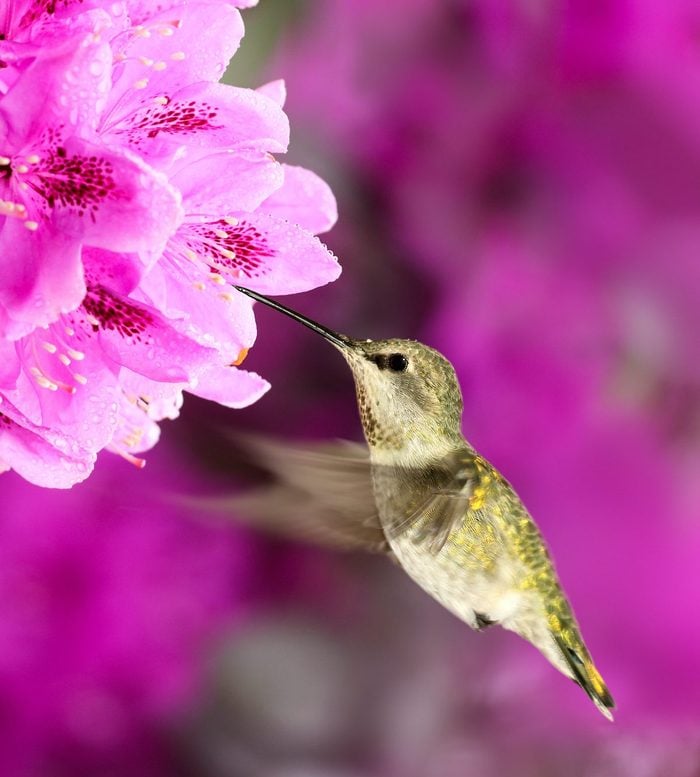
Rhododendron
Rhododendron spp., Zones 4 to 10
Attract hummingbirds by choosing from hundreds of species in this flowering shrub’s family. Some types, such as Catawba rhododendron, are noted for being more attractive to hummingbirds than others. Plant these colorful hummingbird bushes wherever they will receive dappled sunlight to partial shade. Too much shade results in fewer flowers. Growing in moist, well-draining, acidic soil is also vital.
Why we love it: The large clusters of brightly colored, bell-shaped flowers on some cultivars are also quite fragrant.
Discover the best perennials to grow for hummingbirds.
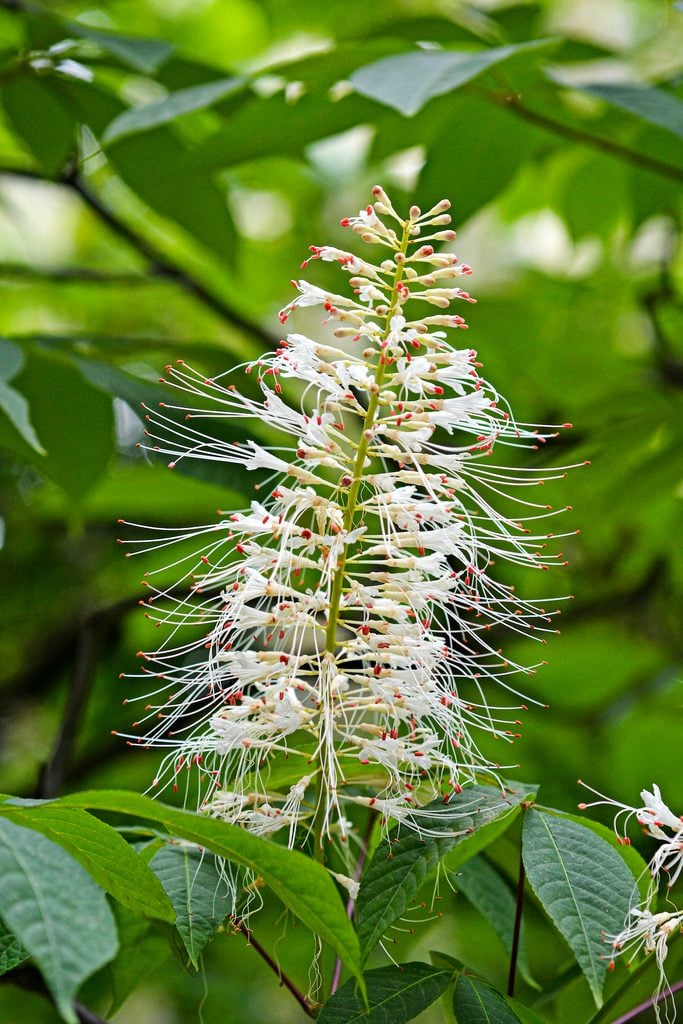
Bottlebrush Buckeye
Aesculus parviflora, Zones 4 to 8
This suckering, shade-tolerant shrub blooms in late spring and early summer with long white flower structures that stand upright like candles. It’ll reach anywhere from 8 to 12 feet in height with a slightly wider spread. Use bottlebrush buckeye as a lovely backdrop in a shrub border.
Why we love it: Butterflies will visit this shrub, and it’s native to the southeastern U.S.
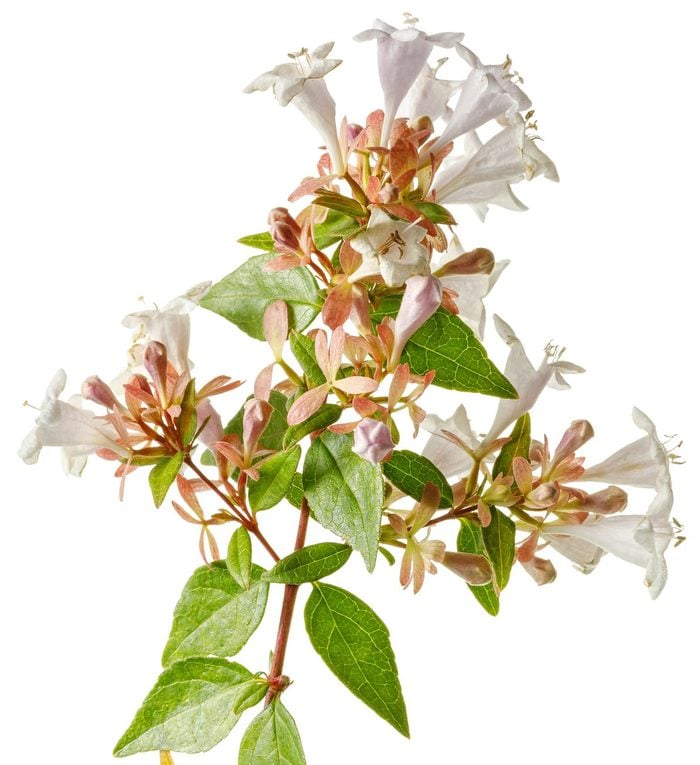
Glossy Abelia
Linnaea x grandiflora, Zones 6 to 9
As the name suggests, glossy abelia has lustrous, dark green leaves that are evergreen to semi-evergreen. The scented, funnel-shaped white flowers with a pink blush and appear from late spring through summer. Grow these hummingbird bushes in full to partial sun.
Why we love it: The attractive arching habit can create an ideal informal hedge.
Get answers to frequently asked questions about feeding hummingbirds.
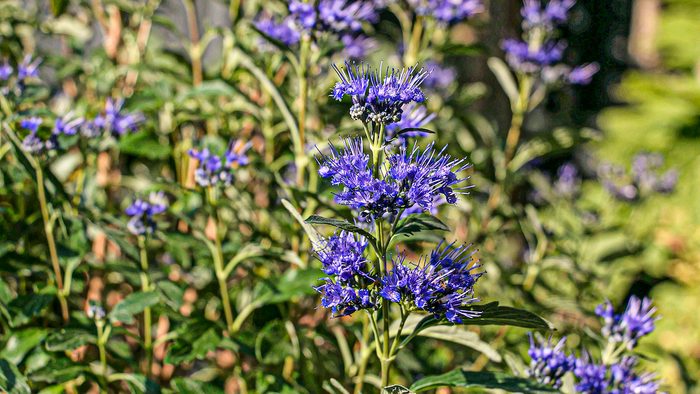
Bluebeard
Caryopteris x clandonensis, Zones 5 to 9
Being drought tolerant and deer resistant are two big-time pluses for this shrub. It’s a huge hit with pollinators, supporting hummingbirds and also bumblebees, which have been stressed by loss of habitat. Bluebeard may experience some dieback in regions with colder winters. At maturity, it’ll be 2 to 4 feet tall and wide.
Why we love it: The late-season blue flowers look striking in the garden, and the aromatic foliage is often gray-green or even chartreuse on some cultivars.
Love blue flowers? Attract a crowd of hummingbirds with Playin’ the Blues salvia.
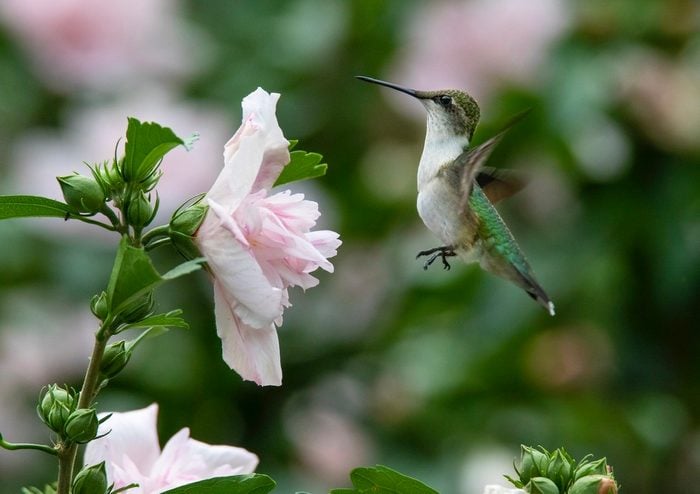
Rose of Sharon
Hibiscus syriacus, Zones 5 to 9
Rose of Sharon is a stately shrub that reaches 8 to 12 feet tall, this hardy hibiscus is adaptable to various soils but does best in moist yet well-draining soil. Cut back faded blooms to prevent seed formation, or grow hybrids that don’t produce viable seeds. It also makes an attractive flowering hedge when massed together.
Why we love it: You and the hummingbirds will enjoy this late-season bloomer’s trumpetlike flowers in white, pink, red, purple or violet hues.
Grow these late summer and fall flowers for hummingbirds.
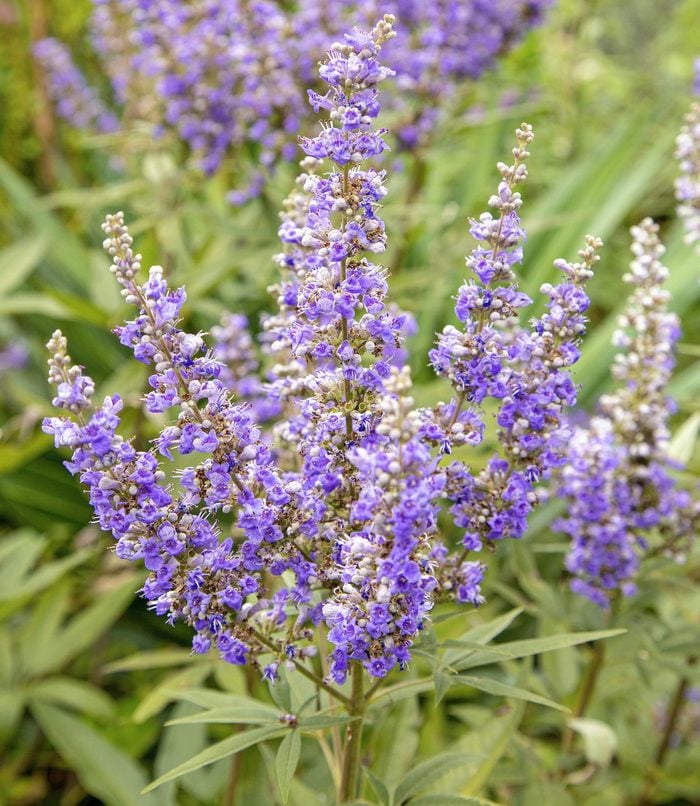
Chaste Tree
Vitex agnus-castus, Zones 5 to 9
A chaste tree can often be kept shorter and heavily pruned since it’ll bloom on new wood, though some cultivars reach 25 feet tall. The purple flower spikes put on a show from late spring to summer. The tree tolerates heat and salt. Because it reseeds readily, make sure it’s not invasive in your area.
Why we love it: Once established, it makes a fine addition to hummingbird-friendly xeriscapes.
Check out the top 10 vines to grow for hummingbirds.
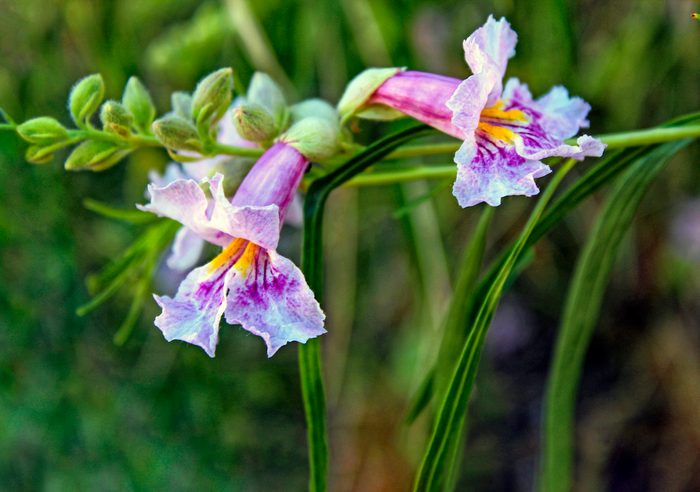
Desert Willow
Chilopsis linearis, Zones 7 to 11
This drought-tolerant shrub is right at home in desert, chaparral and grassland habitats. Its name refers to the narrow willowlike leaves. The showy trumpet-shaped flowers appear from late spring into fall.
Why we love it: Hummingbirds simply adore this native plant’s sweetly scented flowers, and some birds may nest in it.
Psst—skip growing these flowering plants that hummingbirds don’t like.
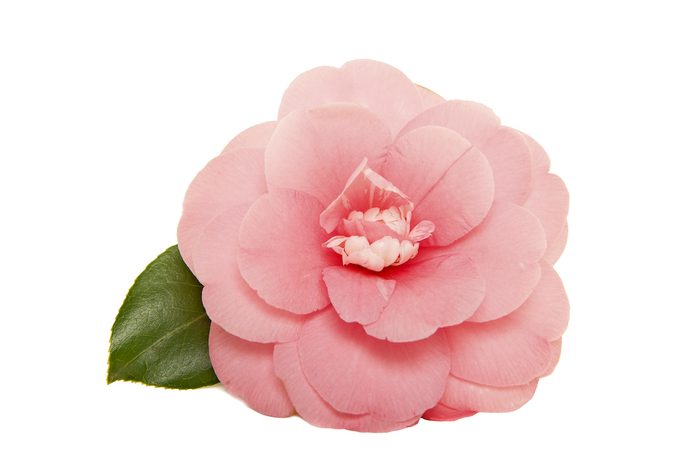
Camellia
Camellia spp., Zones 6 to 10
Camellias like moist, acidic, fertile soil and partial shade. With a dense, bushy form and blooms that resemble roses or peonies, these hummingbird bushes are a natural focal point plant. Camellia sasanqua is a popular choice for hummingbird enthusiasts.
Why we love it: Pick from more than 250 species, with bloom times ranging from late fall to early spring.
Hummingbirds can’t resist fiery crocosmia flowers.
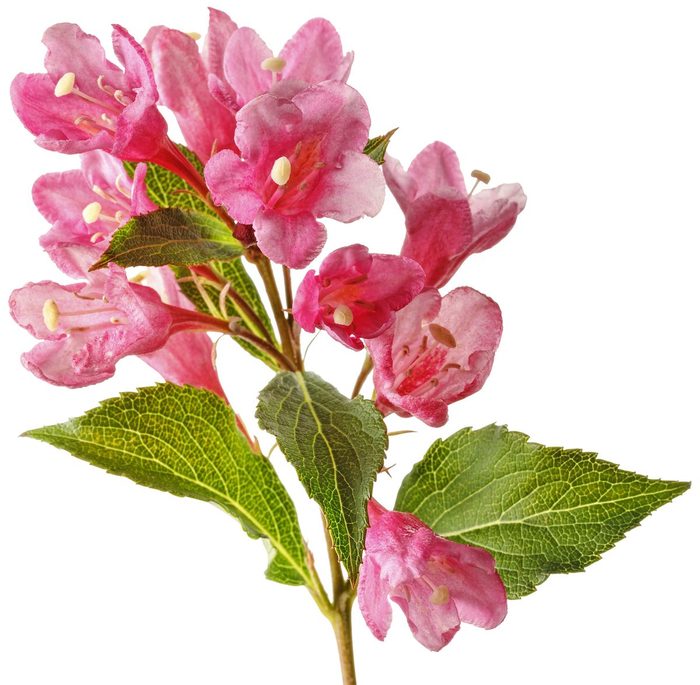
Weigela
Weigela florida, Zones 4 to 8
Though old-fashioned weigela didn’t offer much after its bloom, newer cultivars exist with burgundy, gold, green, cream or pink foliage. Some are even repeat bloomers after the initial flush of flowers in late spring. Weigela grows 6 to 10 feet tall, but compact cultivars of these hummingbird bushes are available in the 1 1/2-to-4-foot range.
Why we love it: The blooms on arching stems look particularly good against dark-leaved varieties.
Learn how to create an ideal hummingbird habitat.
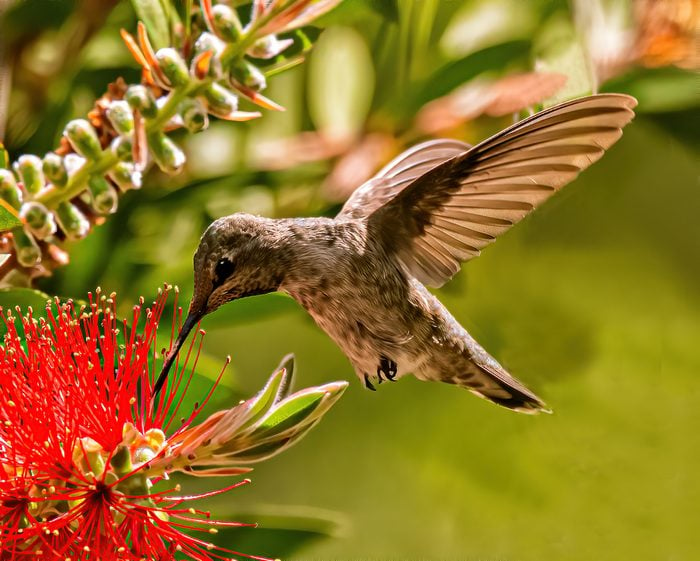
Bottlebrush
Melaleuca citrina, Zones 8 to 11
Sometimes known as callistemon, bottlebrush adapts to practically any soil except those that are alkaline or that poorly drain. Grow in full sun. With a mature size of 8 to 15 feet high and wide, this upright species can be pruned into a tree shape.
Why we love it: Distinctive large spikes of red blooms truly stand out.
Next, learn how to grow native firebush to attract hummingbirds.
